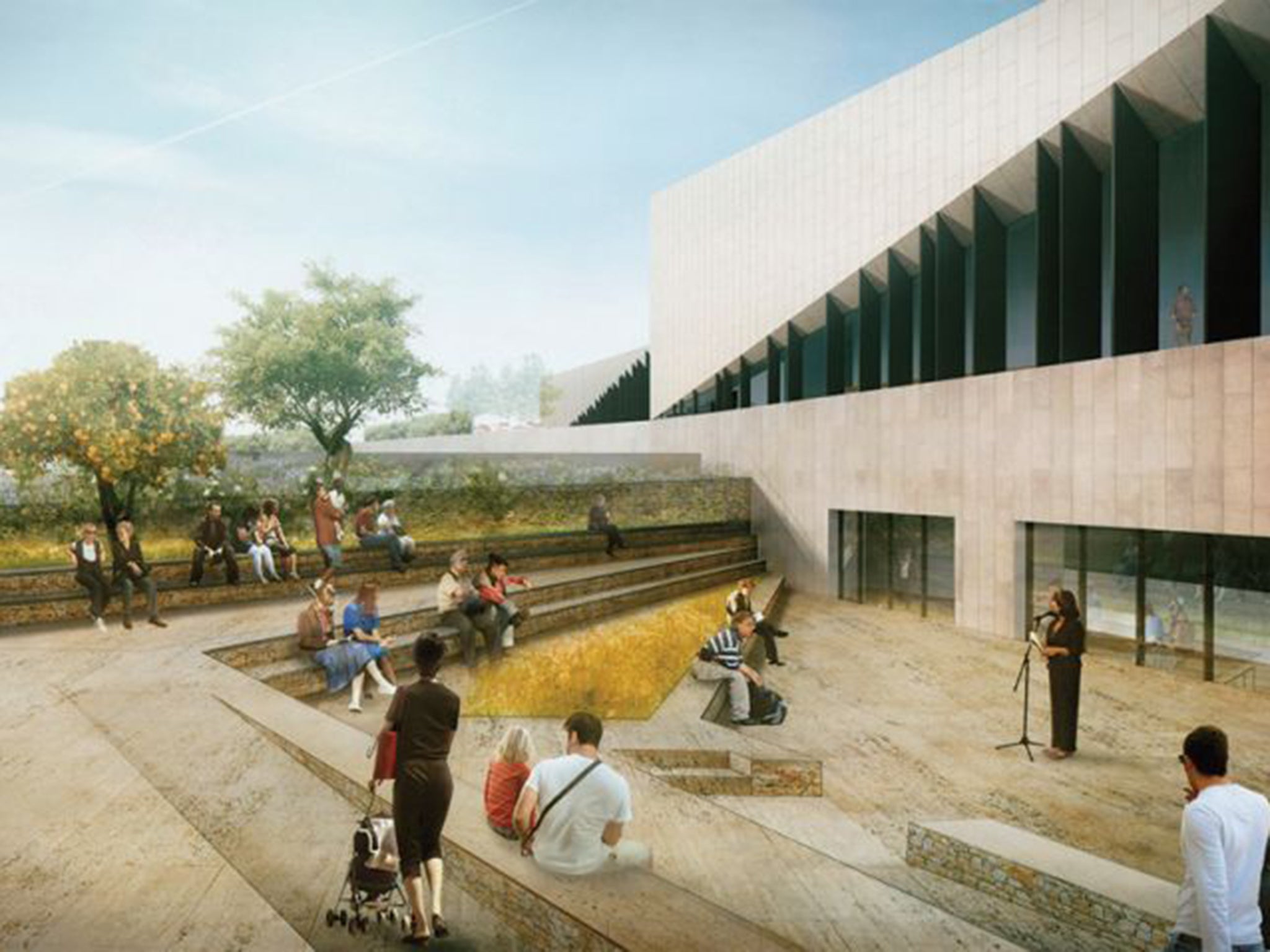Palestinian Museum: New institution to exhibit the history of a beleaguered people
Site intended to become a hub of a network of institutions across the world, which it hopes will become 'satellites'

One thing visitors should not expect when Palestine’s first national museum opens its doors next year is a dry, chronological exhibit of the history of its dispersed people.
Planning for the Palestinian Museum is now at full throttle, as construction workers advance towards completion of its hilltop building. Director Jack Persekian is finalising the opening exhibition and says he hopes the museum will become a unifying force that transcends borders with the active participation of Palestinians everywhere.
“The goal is to connect the Palestinians and present different narratives to the world of who we are, where we come from and what we aspire to,” says Mr Persekian, a Palestinian from East Jerusalem.
The idea behind the museum has evolved since 1997, when it was first conceived of by the Welfare Association, an organisation of Palestinian philanthropists based in Ramallah, Lebanon and London, as a museum of memory to mark the 50th anniversary of the nakba, or tragedy of displacement that accompanied Israel’s birth.
The museum idea was put on hold with the eruption of the second intifada uprising in 2000 and when it was revived in more recent years a decision was taken to broaden it beyond the nakba. “People questioned the need to pitch the story of Palestine against the Israeli story and asked why do we need to talk about our history, people and culture always within the context of the creation of Israel and its aftermath,” Mr Persekian said.
But unlike most national museums, the Palestinian Museum’s primary target audience is fragmented and separated: many, such as Gazans who can’t journey to the West Bank due to Israeli travel restrictions, cannot reach it at all, while more than half of the world’s Palestinians are scattered far beyond their homeland in a diaspora spanning six continents. In view of this, the museum seeks to define itself not as a single building in Bir Zeit but as the hub of a network of institutions abroad with which it is forging ties and which it hopes will become “satellites”, according to Mr Persekian. The idea is that the Palestinian Museum will support these institutions in Jordan, Beirut, Gaza, Haifa and elsewhere to develop their collections and make them more accessible to visitors, while the institutions will constitute a bridge between the Palestinian Museum and local Palestinian populations, he added.
“The satellites will provide physical connections with centres where Palestinians live. People talk about having online connections, so that people anywhere can access your website. But we wanted to take it a step further and actually make the effort of reaching out and forging connections with existing institutions and make partnerships.”
The first exhibition, which Mr Persekian hopes will open simultaneously in Bir Zeit, London and Santiago in Chile in May, is Never Part, which seeks to tell the stories of Palestinians through cherished objects they carried with them over the years. “Through the objects, we reflect on the personal identity of people and their history collectively. It’s the story of Palestinians told in many, many voices.” Among the 280 objects are keys, a comb, a bed and even a cactus plant carried by a refugee from Jaffa in 1948, who gave offshoots to his sons and daughters.
Soliciting the objects from the public reflects the museum’s efforts to emanate from and involve ordinary Palestinians, Mr Persekian says. “We wanted to demystify the whole concept of the museum, so rather than it tell people as an all-knowing entity what they need to know about Palestinians, we wanted the people themselves to bring in the objects so there is a connection with ordinary people.
“So instead of presenting this as the most important painting or archaeological find or poet, we wanted to completely open up the museum through the objects.”
Also well underway is the museum’s Family Album project, an attempt to build a visual archive for Palestinians by gathering and scanning collections of photographs, taking oral histories from their owners and writing captions. One collection of 343 pictures was made available by Wijdan Obeid, an elderly woman from East Jerusalem whose father, Ali was active in the construction workers union there. The black and white pictures, some of them torn, give a sense of how Palestinians often migrated for work across the Arab world, showing construction sites in Amman, Kuwait and Baghdad during the 1950s and 1960s. Museum staffers plan to interview Ms Obeid about each of the pictures.
“It takes a lot of time but I really enjoy doing this,” said Natalie Masri, 23, a museum staffer responsible for scanning the pictures. “It is very important for the next generations to have our history and our grandfather’s history.”
Join our commenting forum
Join thought-provoking conversations, follow other Independent readers and see their replies
Comments